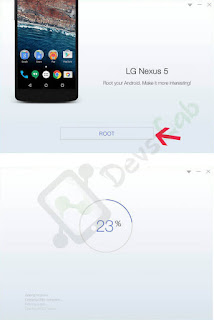Android {operating system}
Android (stylized as android) is a mobile operating system developed by Google, based on the Linux kernel and designed primarily for touchscreen mobile devices such as smartphones and tablets. Android's user interface is mainly based on direct manipulation, using touch gestures that loosely correspond to real-world actions, such as swiping, tapping and pinching, to manipulate on-screen objects, along with a virtual keyboard for text input. In addition to touchscreen devices, Google has further developed Android TV for televisions, Android Auto for cars, and Android Wear for wrist watches, each with a specialized user interface. Variants of Android are also used on notebooks, game consoles, digital cameras, and other electronics.Android has the largest installed base of all operating systems (OS) of any kind.[b] Android has been the best selling OS on tablets since 2013, and on smartphones it is dominant by any metric.
Initially developed by Android, Inc., which Google bought in 2005,[17] Android was unveiled in 2007 along with the founding of the Open Handset Alliance – a consortium of hardware, software, and telecommunication companies devoted to advancing open standards for mobile devices.[18] As of July 2013, the Google Play store has had over one million Android applications ("apps") published – including many "business-class apps"[19] that rival competing mobile platforms[20] – and as of May 2016 over 65 billion applications downloaded.[21] An April–May 2013 survey of mobile application developers found that 71% of developers create applications for Android,[22] and a 2015 survey found that 40% of full-time professional developers see Android as their priority target platform, which is comparable to Apple's iOS on 37% with both platforms far above others.[23] In September 2015, Android had 1.4 billion monthly active devices.
Hardware
The main hardware platform for Android is the ARM (ARMv7 and ARMv8-A architectures), with x86 and MIPS architectures also officially supported in later versions of Android. Since Android 5.0 "Lollipop", 64-bit variants of all platforms are supported in addition to the 32-bit variants.[90] The unofficial Android-x86 project provided support for the x86 architectures ahead of the official support.[6][91] MIPS architecture was also supported before Google did. Since 2012, Android devices with Intel processors began to appear, including phones[92] and tablets. While gaining support for 64-bit platforms, Android was first made to run on 64-bit x86 and then on ARM64.Requirements for the minimum amount of RAM for devices running Android 5.1 range from 512 MB of RAM for normal-density screens, to about 1.8 GB for high-density screens.[93] The recommendation for Android 4.4 is to have at least 512 MB of RAM,[94] while for "low RAM" devices 340 MB is the required minimum amount that does not include memory dedicated to various hardware components such as the baseband processor.[95] Android 4.4 requires a 32-bit ARMv7, MIPS or x86 architecture processor (latter two through unofficial ports),[6][96] together with an OpenGL ES 2.0 compatible graphics processing unit (GPU).[97] Android supports OpenGL ES 1.1, 2.0, 3.0, 3.1 and as of latest major version, 3.2 and Vulkan. Some applications may explicitly require a certain version of the OpenGL ES, and suitable GPU hardware is required to run such applications.[97]Android devices incorporate many optional hardware components, including still or video cameras, GPS, orientation sensors, dedicated gaming controls, accelerometers, gyroscopes, barometers, magnetometers, proximity sensors, pressure sensors, thermometers, and touchscreens. Some hardware components are not required, but became standard in certain classes of devices, such as smartphones, and additional requirements apply if they are present. Some other hardware was initially required, but those requirements have been relaxed or eliminated altogether. For example, as Android was developed initially as a phone OS, hardware such as microphones were required, while over time the phone function became optional.[79] Android used to require an autofocus camera, which was relaxed to a fixed-focus camera[79] if present at all, since the camera was dropped as a requirement entirely when Android started to be used on set-top boxes.In addition to running on smartphones and tablets, several vendors run Android natively on regular PC hardware with a keyboard and mouse.[98][99][100][101] In addition to their availability on commercially available hardware, similar PC hardware-friendly versions of Android are freely available from the Android-x86 project, including customized Android 4.4.[102] Using the Android emulator that is part of the Android SDK, or by using BlueStacks or Andy, Android can also run non-natively on x86.[103][104] Chinese companies are building a PC and mobile operating system, based on Android, to "compete directly with Microsoft Windows and Google Android".[105] The Chinese Academy of Engineering noted that "more than a dozen" companies were customising Android following a Chinese ban on the use of Windows 8 on government PCs.
Development
Android is developed in private by Google until the latest changes and updates are ready to be released, at which point the source code is made available publicly.[109] This source code will only run without modification on select devices, usually the Nexus series of devices. The source code is, in turn, adapted by original equipment manufacturers (OEMs) to run on their hardware.[110] Android's source code does not contain the often proprietary device drivers that are needed for certain hardware components.[111]In 2007, the green Android logo was designed for Google by graphic designer Irina Blok. The design team was tasked with a project to create a universally identifiable icon with the specific inclusion of a robot in the final design. After numerous design developments based on science-fiction and space movies, the team eventually sought inspiration from the human symbol on restroom doors and modified the figure into a robot shape. As Android is open-sourced, it was agreed that the logo should be likewise, and since its launch the green logo has been reinterpreted into countless variations on the original design.
If you find this useful, please share it with your friends! Thanks.
If you find this useful, please share it with your friends! Thanks.










